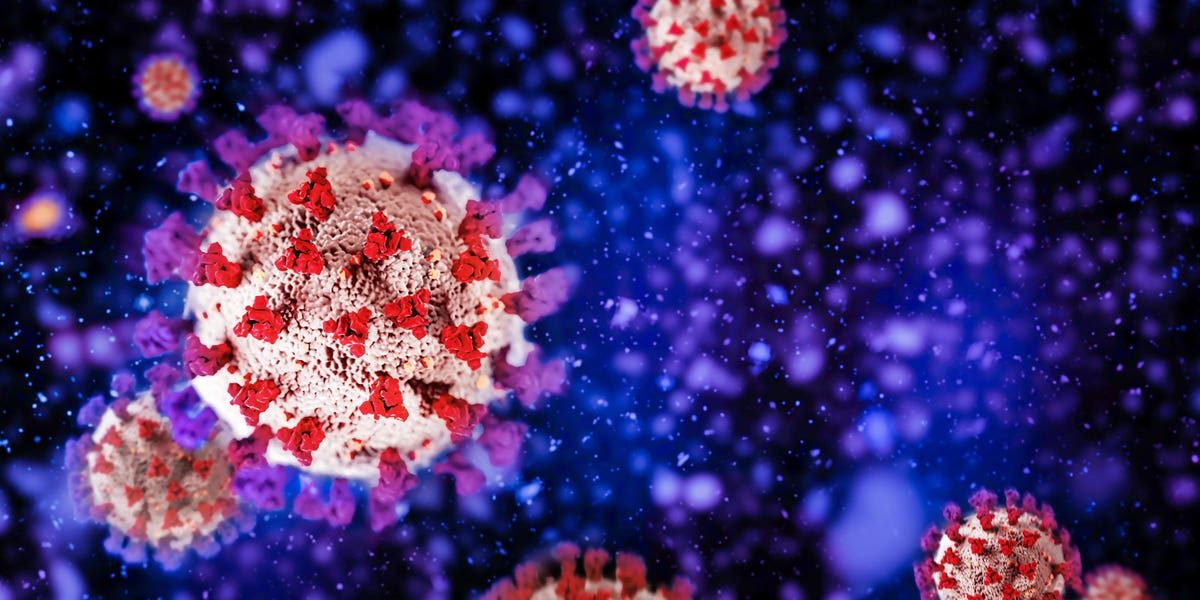Recent analyses show that Omicron variants of SARS-CoV-2 more strongly suppress major histocompatibility complex class I expression than previous versions of the virus. Throughout the pandemic, the latest versions of SARS-CoV-2 adapted well to our immune systems to avoid clearance.
Once the virus enters the cell, it suppresses not only the ability of the cell itself to mount an active defense, but also suppresses the cell’s ability to signal other cells that it’s been infected, effectively hiding from cytotoxic T cells, which might otherwise kill it. SARS-CoV-2 does this by downregulating the antigen-presenting markers most important for recognizing and killing infected cells: MHC class I and II.
Previous studies showed that the NSP5 protein downregulates MHC-II. Here, Moriyama et al. show that the Omicron variant of SARS-CoV-2 also efficiently downregulates MHC-I, rendering it invisible.
Moriyama et al. found that the wild-type strain of SARS-CoV-2 strongly suppresses MHC-I expression, meaning the virus bypassed the surface marker system so critical to immune clearance. This suppression is not found in influenza virus infection, meaning it is specifically a feature of SARS-CoV-2.
Further, in vivo experiments found that variants of concern before Omicron shared similar levels of MHC-I suppression, despite more developed immune evasion mutations in these variants.
One of the SARS-CoV-2 proteins known to play a role in MHC-I suppression is Orf8. This accessory protein is commonly mutated in variants of concern, leading Moriyama et al. to analyze the mutations individually to discern their impact on MHC-I suppression.
Isolating the seven most common Orf8 mutations in vitro and applying them to HEK293T cells equipped with MHC-I expression-detecting plasmids, they found that all the mutations inhibited MHC-I suppression. In the case of the Alpha variant that spread during late 2020 and early 2021, the Orf8 protein is fully truncated at position 27 by a mutation, completely abrogating MHC-I downregulation.
In other words, the original SARS-CoV-2 Orf8 protein was better at suppressing MHC-I than the Orf8 proteins of variants that followed, in stark contrast to most immune suppression functions which only improved with further mutation.
Extending this point to the current Omicron variants, the Orf8 protein is far less mutated than in previous variants of concern. The protein is completely intact in most cases with the most common Omicron variants.
As expected, when testing the Omicron variant for MHC-I suppression, Moriyama et al. found improved suppression compared to the underperforming variants of concern and even stronger suppression than the wild-type virus. The fully intact Orf8 protein compliments the enhanced immune evasive capacities of the rest of the virus.
The researchers found that a common mutation in Omicron likely contributes to enhanced MHC-I suppression, namely T9I in the E protein, shared among the subvariants they examined.
The superior ability of Omicron to suppress MHC-I is a major contributing factor to its sustained havoc since November 2021. By evading cytotoxic T cells, the virus avoids clearance by the immune system at a much more effective rate, leaving host cells more susceptible to infection long after the host initially came in contact with the pathogen.
What, then, can we do with this information? One of the chief hallmarks of the Covid-19 pandemic is the virus mutating to escape immune surveillance. Its most well-known method of escape is by altering the spike protein. However, it’s now known that the virus has many other activities that downregulate the innate immune response.
The virus downregulates signaling molecules that infected cells release. As shown here, it also downregulates the antigen-presenting molecules, MHC class one and two, by which T cells and other immune components might normally eliminate SARS-CoV-2.
Another feature is the continued evolution toward increased infectivity, wherein lower doses of the virus can initiate infection; for instance, Omicron is roughly ten times more infectious than the initial Wuhan wild-type. Although most research has been focused on the outside of the virus, the spike protein, it’s now abundantly clear that immune escape mutations elsewhere in the virus are increasingly potent in reducing innate immunity and immune recognition.
Read the full article here





